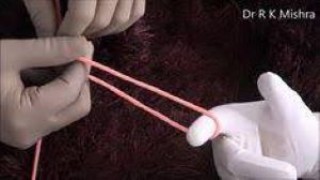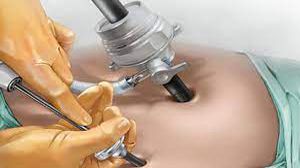Precision and Efficiency: Laparoscopic Linear Cutter Staplers for Surgical Procedures
Add to
Share
1,482 views
Report
2 years ago
Description
Laparoscopic surgery has revolutionized the field of minimally invasive surgery, offering numerous benefits to patients, including reduced postoperative pain, shorter hospital stays, and faster recovery. Within the realm of laparoscopic surgery, the laparoscopic linear cutter stapler has emerged as a valuable tool, enabling surgeons to achieve precise and efficient tissue approximation and secure hemostasis during various surgical procedures. A laparoscopic linear cutter stapler is a specialized surgical instrument designed to simultaneously cut and staple tissues. It consists of a long, slender shaft with a handle at one end and a stapling mechanism at the other. The stapling mechanism incorporates a cartridge containing rows of staples, which are deployed along with a knife blade to cut and seal the tissues in one swift motion. One of the key advantages of laparoscopic linear cutter staplers is their ability to perform secure and reliable tissue closures. The stapler applies evenly spaced rows of titanium or stainless steel staples, providing a strong and consistent closure that helps to prevent bleeding and maintain tissue integrity. This is particularly beneficial in procedures where precision and reliability are essential, such as gastrointestinal anastomoses, bariatric surgery, and colorectal procedures. In addition to precise tissue approximation, laparoscopic linear cutter staplers also offer improved efficiency in the operating room. By combining the cutting and stapling steps into a single action, surgical time can be significantly reduced. This streamlined process minimizes the number of instrument exchanges and enhances overall procedural efficiency, leading to shorter operative times and potentially reducing the risk of complications. Furthermore, laparoscopic linear cutter staplers offer ergonomic advantages for surgeons. The instruments are designed to be lightweight and ergonomically shaped, allowing for comfortable handling and precise control during surgical procedures. This can help reduce surgeon fatigue and enhance overall surgical accuracy. It is important to note that the successful use of laparoscopic linear cutter staplers requires proper training and experience. Surgeons must have a thorough understanding of the anatomy, appropriate staple selection, and optimal technique for each specific procedure. Adherence to established safety guidelines, such as ensuring proper tissue alignment and appropriate staple height selection, is critical to achieve optimal outcomes and minimize potential complications. Laparoscopic surgery has undergone significant advancements in recent years, with laparoscopic linear cutter staplers emerging as invaluable tools in the field. These specialized instruments offer surgeons precise control and efficient tissue management during various laparoscopic procedures, revolutionizing the way surgical interventions are performed. The primary advantage of laparoscopic linear cutter staplers lies in their ability to provide secure and reliable tissue closure. The stapling mechanism, combined with a cutting blade, allows surgeons to simultaneously cut and staple tissues with a single motion. This streamlined approach ensures consistent and uniform staple formation, minimizing the risk of tissue leaks, bleeding, and other complications. Whether in gastrointestinal surgery, bariatric procedures, or colorectal interventions, laparoscopic linear cutter staplers offer superior tissue approximation and hemostasis. Efficiency is another key aspect of laparoscopic linear cutter staplers. By integrating cutting and stapling into one instrument, these devices streamline the surgical process, reducing the need for instrument exchanges and optimizing procedural time. The efficient deployment of staples not only saves time but also enhances overall workflow, enabling surgeons to focus on other critical aspects of the procedure. This increased efficiency translates into shorter operative times and potentially improved patient outcomes. In addition to their precision and efficiency, laparoscopic linear cutter staplers prioritize surgeon comfort and ergonomics. These instruments are designed with lightweight materials and ergonomic handles, allowing for easy maneuverability and reducing hand fatigue during long procedures. The improved control and handling contribute to surgical accuracy, ensuring precise placement of staples and minimizing the risk of errors. It is worth noting that the successful utilization of laparoscopic linear cutter staplers requires proper training and expertise. Surgeons must undergo specialized training to master the technique, understand the indications and contraindications, and learn how to select the appropriate stapler size and cartridge. Adhering to standardized safety guidelines, such as proper tissue manipulation, adequate stapler positioning, and meticulous quality control, is crucial to maximize the benefits and minimize potential complications associated with these instruments. In conclusion, laparoscopic linear cutter staplers have revolutionized the landscape of minimally invasive surgery by enhancing precision and efficiency. These instruments offer secure tissue closure, optimized procedural time, and improved surgeon ergonomics. As surgical techniques continue to evolve, laparoscopic linear cutter staplers play an increasingly vital role in achieving optimal outcomes in a variety of laparoscopic procedures. By empowering surgeons with advanced tools, these staplers contribute to the advancement of minimally invasive surgery and the overall well-being of patients.
Similar Videos





